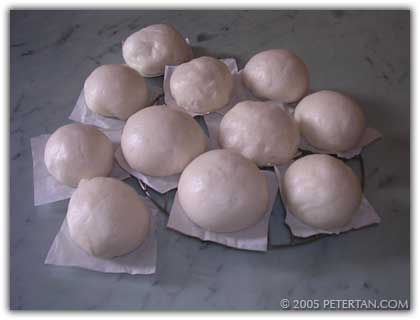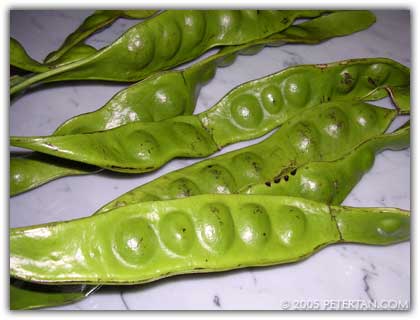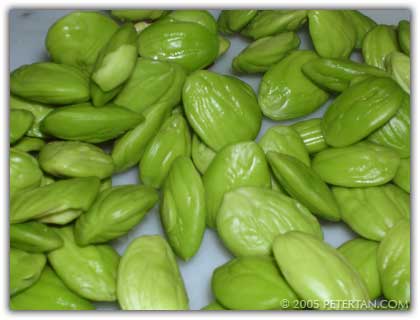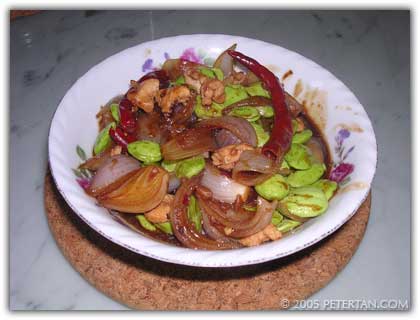
Acar hu – Nyonya fish pickle.
Wuan bought some very nice ikan belanak from the wet market and decided to make acar hu with it. Acar hu, also known as acar ikan in Malay, is a popular Nyonya pickled fish dish. Wuan had made it once for me many years ago and I liked it very much. I am not too fond of ikan belanak because I am too lazy to pick out the bones. She added another two slices of ikan kurau just for me.
The following recipe is adapted from Nyonya Flavours, a Penang Straits Chinese cuisine recipe book jointly published by The State Chinese (Penang) Association and Star Publications. The step by step instructions are complemented with photographs of the process.
Acar Hu
Ingredients:
8 ikan belanak (chee ya hu, mullet), gutted and scaled
2 slices ikan kurau (mah yau yee, threadfin)
2 tsp salt to season fish
Cooking oil for deep frying
5cm fresh turmeric, thinly sliced
100gm young ginger, finely shredded
2 bulbs garlic, finely shredded
6 red chillies, seeded and quartered lengthwise
5 tbsp cooking oil
250ml rice vinegar
1 tsp salt
10 tbsp granulated sugar

Ikan kurau slices and ikan belanak. Remove the scales and gut the fish. Lightly rub with salt to season.

Deep fry the fish until golden. Remove from oil and set aside.

Deep fried ikan belanak and ikan kurau slices.

Young ginger, garlic, turmeric and red chilies.

Sliced garlic, sliced red chilies, shredded young ginger and sliced turmeric.

Fry turmeric slices in 5 tablespoon of oil until oil turns yellow and fragrant. Discard turmeric.

Fry garlic slices in turmeric oil until fragrant. Add shredded young ginger and continue frying until fragrant and the ginger shreds start to shrivel. Leave aside to cool.

Put the garlic and ginger in a big glass bowl. Add red chillies. Pour in rice vinegar. Add salt and sugar to taste. Keep submerged in the vinegar for at least one day before serving.

Acar hu – Nyonya fish pickle.
The acar hu is best eaten with rice. Its piquant taste is truly appetising when accompanied by the red chilli, ginger and garlic that are pickled together with it. This dish may also be therapeutic as well as turmeric and ginger can dispel wind in the body. Likewise, many other Nyonya dishes use herbs, spices and rhizomes for similar therapeutic effects besides being delicious and unique in taste.




